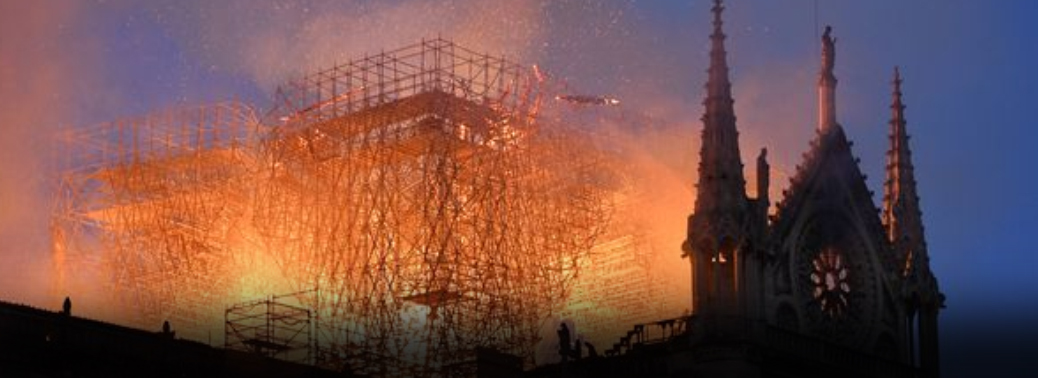CATHEDRAL BLAZE
17, Apr 2019

Prelims level : Art and Culture
Mains level : GS-I Indian heritage and Culture, History and Geography of the World and society
Why in News:
- Notre-Dame cathedral got fire; it was probably by accident says French prosecutors.
Background:
- Notre-Dame in Paris is famous for its intricate gothic-style design and for its aesthetic grandeur and harmony.
Neo-Gothic Style:
- The neo-Gothic style was a revival of the early Gothic style of architecture which had its roots in buildings, especially churches, built in northern Europe during the medieval period. It was characterised by high-pitched roofs, pointed arches and detailed decoration.
In India-gothic style
- This style was adapted for building infrastructure in Bombay. An impressive group of buildings facing the seafront including the Secretariat, University of Bombay and High Court were all built in this style.
- Many Indians merchants gave money for some of these buildings. They were happy to adopt the neo-Gothic style since they believed it was progressive and would help make Bombay, a modern city.
- The British invested a lot in the design and construction of railway stations in this style, an example of which is Chhatrapati Shivaji Terminus in Mumbai.
Important Holy Relics In The Cathedral:
- Holy Crown of thorns-crown as well as tunic is worn by 13th centur7y king, louis IX A piece of the cross on which Jesus was nailed and one his nails.
History behind this church:
- Construction began in 1163 after Pope Alexander III laid the cornerstone for the new cathedral.
- By the time of Bishop Maurice de Sully’s death in 1196, the apse, choir and the new High Altar were all finished, while the nave itself was nearing completion. In 1200, work began on the western facade, including the west rose window and the towers, all of which were completed around 1250, along with a new north rose window.
- Also during the 1250s, the transepts were remodelled in the latest gothic style
Gothic Cathedral Builders:
- With the aid of only elementary drawings and templates, master stone masons meticulously directed the construction of the great medieval cathedrals of Europe. The practices of intuitive calculation, largely based on simple mathematical ratios and structural precedent, were closely guarded and passed between successive generations of masons. Specific site conditions and the insatiable demand by church authorities for higher and lighter buildings provided the impetus for continual development.






